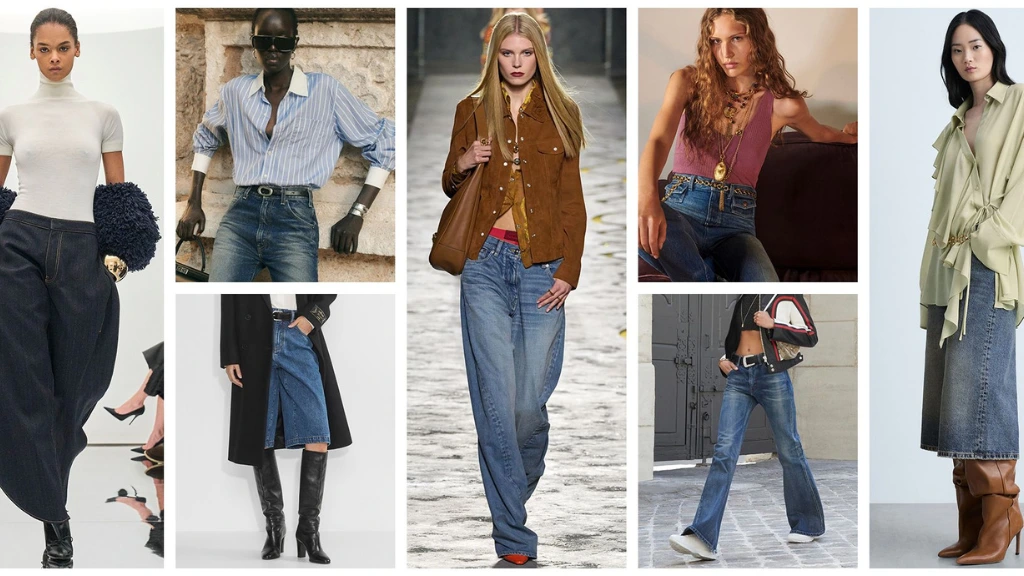Artificial intelligence (AI) is reshaping industries worldwide, and the fashion industry is no exception. From enhancing customer experiences to streamlining supply chains, AI is transforming the way fashion brands operate and interact with consumers. Major fashion houses and retailers are increasingly leveraging AI technologies to stay competitive in an ever-evolving market, delivering personalized experiences, predicting trends, and optimizing processes in ways that were once unimaginable.
In this blog, we’ll explore how some of the top fashion brands are using AI to drive innovation and growth, and what it means for the future of the fashion industry. Whether you’re a fashion enthusiast, a tech lover, or both, this intersection of fashion and AI is worth paying attention to.
You May Also Like: Alexander McQueen: The Visionary Rebel of High Fashion
AI in Fashion: A Game-Changer for Brands
The use of AI in fashion spans various facets of the industry, including design, production, marketing, and customer service. At its core, AI helps fashion brands analyze vast amounts of data, offering insights that drive decision-making processes more efficiently. By automating time-consuming tasks and providing actionable insights, AI allows brands to respond more quickly to market trends, reduce waste, and create products that better meet customer demands.
Let’s look at some of the key areas where AI is being employed by leading fashion brands.
1. Personalized Shopping Experiences
One of the most significant ways AI is revolutionizing fashion is by providing personalized shopping experiences. Top brands are using AI to analyze customer behavior, preferences, and purchase history to offer tailored recommendations. This not only improves customer satisfaction but also increases conversion rates for retailers.
AI-powered recommendation engines, similar to what you might experience on platforms like Amazon or Netflix, have been integrated into fashion e-commerce sites. These systems use machine learning algorithms to analyze customer preferences and suggest products that match their tastes. Fashion brands like H&M and Zara have implemented such systems to personalize the online shopping experience for their customers.
AI-driven chatbots are also becoming common in fashion retail. Brands such as Tommy Hilfiger and Burberry use AI chatbots to provide real-time customer support, assist with product searches, and guide users through the purchase process. These chatbots can answer questions, suggest styles based on user input, and even help with sizing queries.
2. Virtual Fitting Rooms and Styling Assistance
One of the major challenges of online shopping has always been the inability to try on clothes before purchasing. AI technology is helping to solve this problem through virtual fitting rooms. These tools allow customers to “try on” clothes virtually, using their body measurements or avatars created based on AI algorithms.
Brands like Adidas, ASOS, and Nike are integrating AI-powered fitting room experiences into their online platforms. Customers can upload photos or use AR (augmented reality) to visualize how clothes will look on their bodies without ever leaving home. This reduces return rates and provides consumers with greater confidence in their purchasing decisions.
Additionally, AI-powered styling assistance is now being offered by several luxury brands. For instance, Stitch Fix employs AI to analyze customer data and create curated fashion boxes. This approach combines AI algorithms with human stylists to deliver highly personalized recommendations, making the shopping process seamless and enjoyable.
3. Trend Forecasting and Design Innovation
Predicting trends in the fashion industry is critical, and AI is playing a vital role in trend forecasting. In the past, fashion brands relied on trend analysts, runway shows, and cultural observations to forecast what consumers would want. Today, AI can do this faster and with a higher degree of accuracy by analyzing social media posts, online browsing behavior, fashion publications, and even streetwear photography.
AI-powered tools like Heuritech analyze data from millions of images and videos on platforms like Instagram and Pinterest to identify emerging trends. These insights are invaluable to fashion brands as they help predict which colors, styles, and fabrics will dominate upcoming seasons. Brands like Louis Vuitton and Gucci are known to use AI trend forecasting to guide their design decisions.
Moreover, AI is also being used to enhance the creative design process. For instance, some brands are experimenting with AI-driven design tools that generate original patterns or clothing designs based on existing data sets. Google’s Project Muze, for example, uses machine learning to create fashion sketches by interpreting data about user preferences and trends. This innovation enables designers to collaborate with AI, pushing the boundaries of creativity.
4. Inventory Management and Supply Chain Optimization
AI is also making a significant impact on the back end of the fashion industry—particularly in inventory management and supply chain optimization. Fashion retailers lose billions every year due to overproduction or understocking, but AI-driven solutions are helping mitigate these issues.
Zara is a prime example of a brand that uses AI to optimize its supply chain. By analyzing customer data and purchasing behaviors, AI helps Zara manage its inventory in real-time, ensuring that popular products are restocked quickly while minimizing the risk of overproduction. AI can even predict which items are likely to become bestsellers based on current trends and sales data.
Similarly, AI helps brands like Uniqlo manage production more efficiently by identifying which items will sell in different markets and regions. AI models can forecast demand, allowing brands to adjust production levels accordingly. This reduces waste and increases profitability.
5. Sustainability and Ethical Fashion
As the fashion industry faces growing pressure to become more sustainable, AI is proving to be a key tool in achieving eco-friendly goals. AI is helping brands optimize their processes to reduce waste, minimize energy consumption, and produce garments more ethically.
For instance, AI can analyze the environmental impact of different fabrics and manufacturing processes, enabling fashion houses to make more sustainable choices. H&M and Stella McCartney have been at the forefront of adopting AI-driven solutions that reduce waste by recycling fabrics, minimizing water usage, and tracking the carbon footprint of each garment.
Circular fashion is another concept gaining traction, with AI aiding in the process. By analyzing clothing durability and recycling possibilities, AI can help brands create more sustainable products that can be easily repurposed or recycled at the end of their life cycle.
6. Marketing and Advertising with AI
AI is transforming how fashion brands market their products and reach consumers. AI-powered advertising tools allow brands to create highly targeted campaigns by analyzing user behavior, purchase history, and social media activity. This ensures that brands reach the right audience with the right message at the right time.
For instance, Gucci uses AI to analyze its customer base and segment audiences based on shopping patterns. This allows Gucci to create tailored marketing campaigns, whether through social media ads, email marketing, or personalized website experiences.
Additionally, AI is playing a role in influencer marketing by identifying the most effective influencers to promote products. Tools like AI-driven influencer platforms help brands identify influencers whose followers align with the brand’s target audience, optimizing partnerships and maximizing campaign results.
Conclusion: The Future of Fashion with AI
As AI continues to evolve, it is clear that it will play an increasingly important role in the future of fashion. From personalized shopping experiences and virtual fitting rooms to sustainable practices and trend forecasting, AI is empowering fashion brands to stay ahead of the curve in a fast-paced industry.
For consumers, the integration of AI in fashion means better products, more personalized experiences, and more sustainable choices. For brands, it offers the opportunity to become more efficient, innovative, and environmentally responsible.
As we look ahead, the possibilities of AI in fashion are virtually limitless. Whether you’re a fashion aficionado or a tech enthusiast, one thing is certain—AI is changing the face of fashion, and the best is yet to come.










